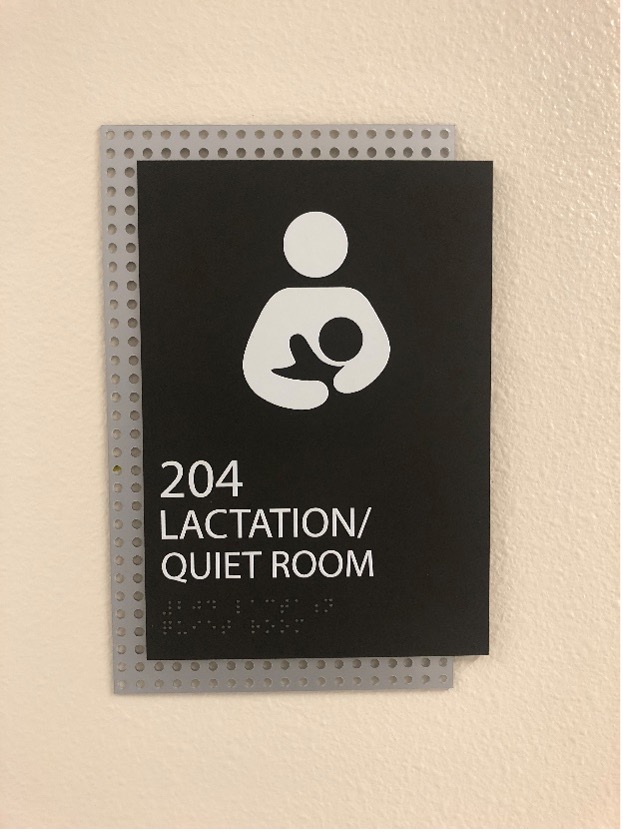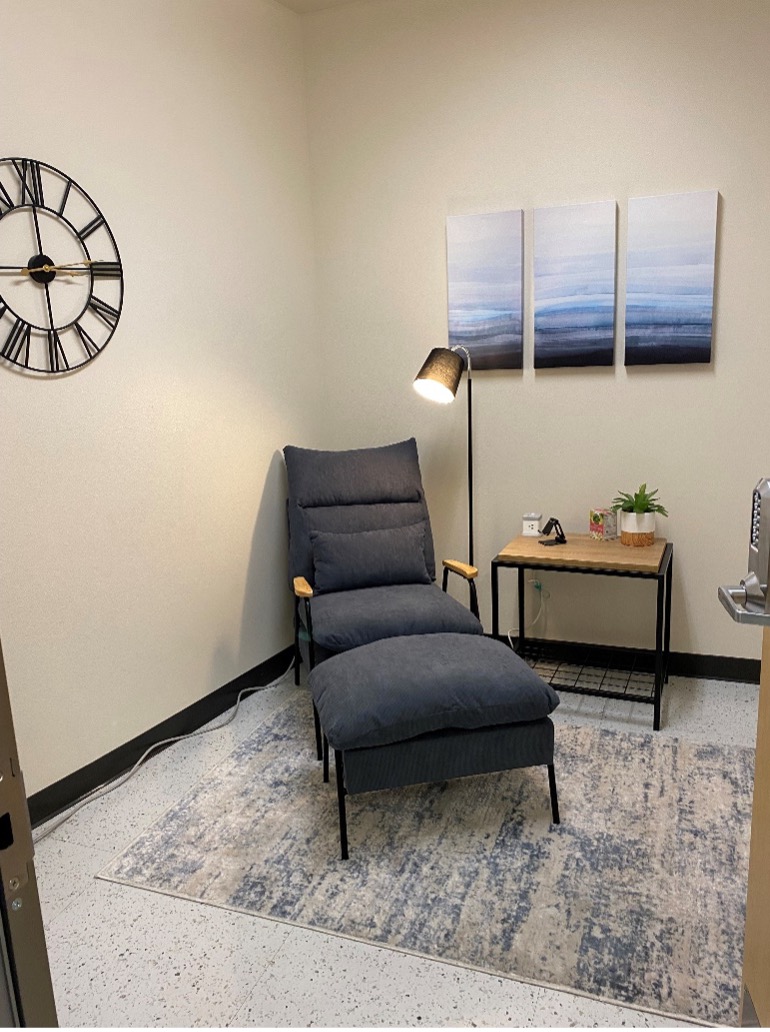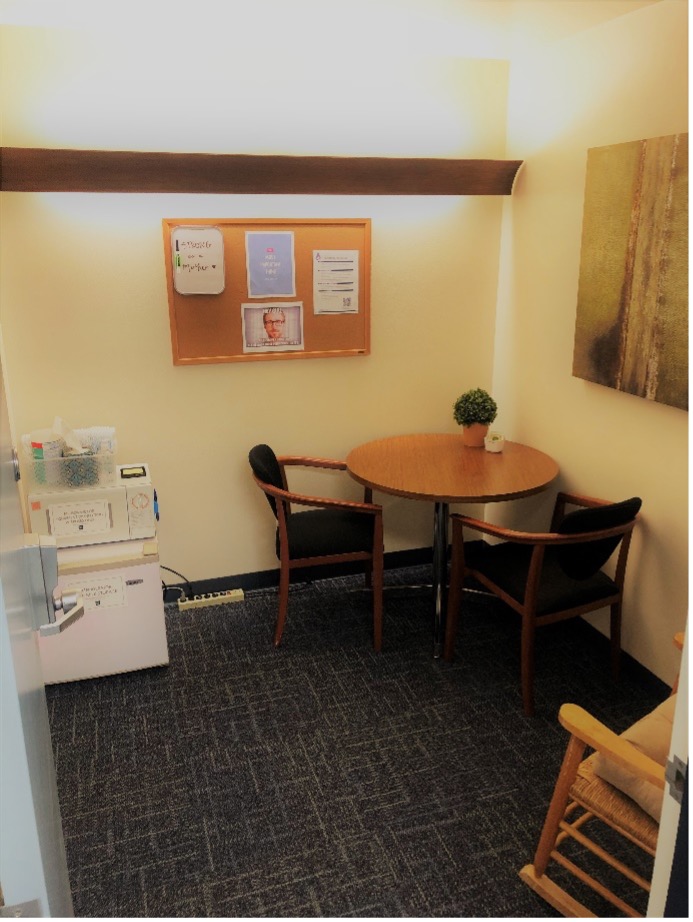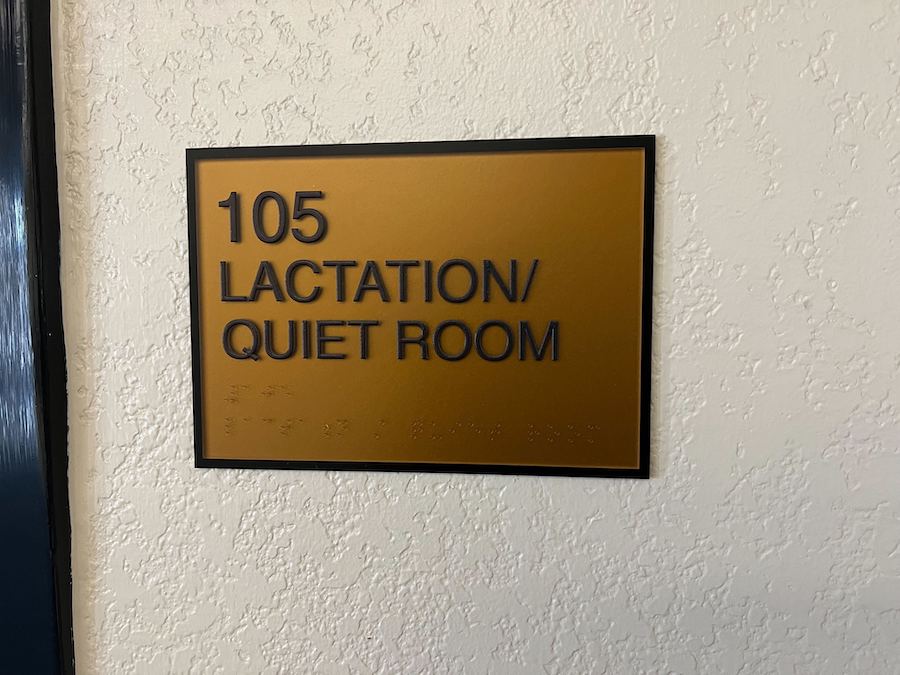Lactation rooms are private spaces where a parent can use a breast pump, nurse or bottle feed their child. These spaces can also be used by those who require privacy for other medical or religious reasons. The University currently maintains nine lactation rooms both on and off campus, and its Lactation Advocacy Subcommittee - a subcommittee of the University Committee on the Status of Women (CSW) - is working to expand access to such spaces for both students and employees.
Dedicated lactation rooms provide real benefits for both nursing parents and their children and help reduce or even eliminate barriers to continued breast/chest feeding once the parent has return to work (Dinour et al., 2022). Providing such spaces often leads to higher employee satisfaction and lower absenteeism and turnover (van Dellen et al., 2021; Wagner et al., 2022). Moreover, federal law requires that workplaces with more than 50 employees provide reasonable break time for lactation and that a place other than a bathroom, that is shielded from view and free from intrusion be provided for the lactating employee.

The United States Department of Health and Human Services recommends that there be at least one lactation space for every 50-100 employees. The Lactation Advocacy Subcommittee’s long-term goal is to have a dedicated lactation room no more than a five-minute walk from every workplace or classroom on campus. The Subcommittee also provides lactation resources to new parents, including information about how to access existing lactation spaces, and helping campus partners ensure these spaces meet certain requirements and are well-maintained (i.e., are kept regularly stocked with paper goods and sanitation supplies).

The University’s first lactation room opened in 2011 in Edmund J. Cain Hall, followed shortly thereafter by a shared use lactation room in the Joe Crowley Student Union. Since 2021, the University has since added eight more rooms, bringing the current total to ten:
- Continuing Education Building, Room 105
- Davidson Mathematics and Science Center, Room 204
- Edmund J. Cain Hall, Room R201A (inside women’s restroom R201)
- Joe Crowley Student Union, Room 309B
- Mathewson-IGT Knowledge Center, Room 103
- William N. Pennington Health Sciences, Room 101
- William N. Pennington Medical Education, Room 208B
- Great Basin Hall, G012-B
- (Off-Campus) Redfield Campus Building A – Nell J. Redfield Building, Room 112B
- (Off-Campus) University Health - 745 W. Moana Lane, Room 310
Each of these spaces is a little different; some are mixed-use spaces that can be used for lactation when needed and some necessitate that those interested request keycard access ahead of time. That said, the Lactation Advocacy Subcommittee ensures all new rooms meet certain requirements, as noted above. The rooms, of course, must be accessible and compliant with the American with Disabilities Act (ADA). They must also have a lockable door, electrical outlet, trashcan, comfortable chair, and sanitizing wipes. The Subcommittee also maintains a list of preferred features and amenities. These include a sink, refrigerator, mirror, clock, coat hooks and more. Several colleges, departments, and units serve as hosts for lactation spaces: Equal Opportunity and Title IX, the College of Science, the Joe Crowley Student Union, University Libraries, the School of Medicine, Extended Studies and Counseling Services.

Additionally, several new lactation rooms are in various stages of development. And as of 2019, Facilities Services pledged to ensure that all new major campus buildings will include dedicated lactation/quiet spaces, so access should contain to expand in the future.
The Lactation Advocacy Subcommittee is eager to work with interested individuals, groups, and departments on campus to identify spaces that could be converted into a lactation room and to advocate for related resources for new and existing parents. Please email us at lqr@unr.edu with any comments or questions. Or visit the Lactation/Quiet Rooms webpage to learn more and get involved.
References
Dinour, L. M., Adwar, R. D., Gentiletti, A., Seguinot, N., & Overgaard, K. (2022). Can I pump here? Availability and awareness of lactation spaces at New Jersey colleges and universities. Journal of American College Health, 70(1), 122–129. https://doi.org/10.1080/07448481.2020.1726930
van Dellen, S. A., Wisse, B., Mobach, M. P., Albers, C. J., & Dijkstra, A. (2021). A cross-sectional study of lactation room quality and Dutch working mothers’ satisfaction, perceived ease of, and perceived support for breast milk expression at work. International Breastfeeding Journal, 16(1), 67. https://doi.org/10.1186/s13006-021-00415-y
Wagner, E. A., Jansen, J. H., DeLuna, H., Anderson, K., Doehring, M. C., & Welch, J. L. (2022). Flexibility in Faculty Work-Life Policies at Medical Schools in the Big Ten Conference: A Ten-Year Follow-up Study. Women’s Health Reports (New Rochelle, N.Y.), 3(1), 67–77. https://doi.org/10.1089/whr.2021.0070
















